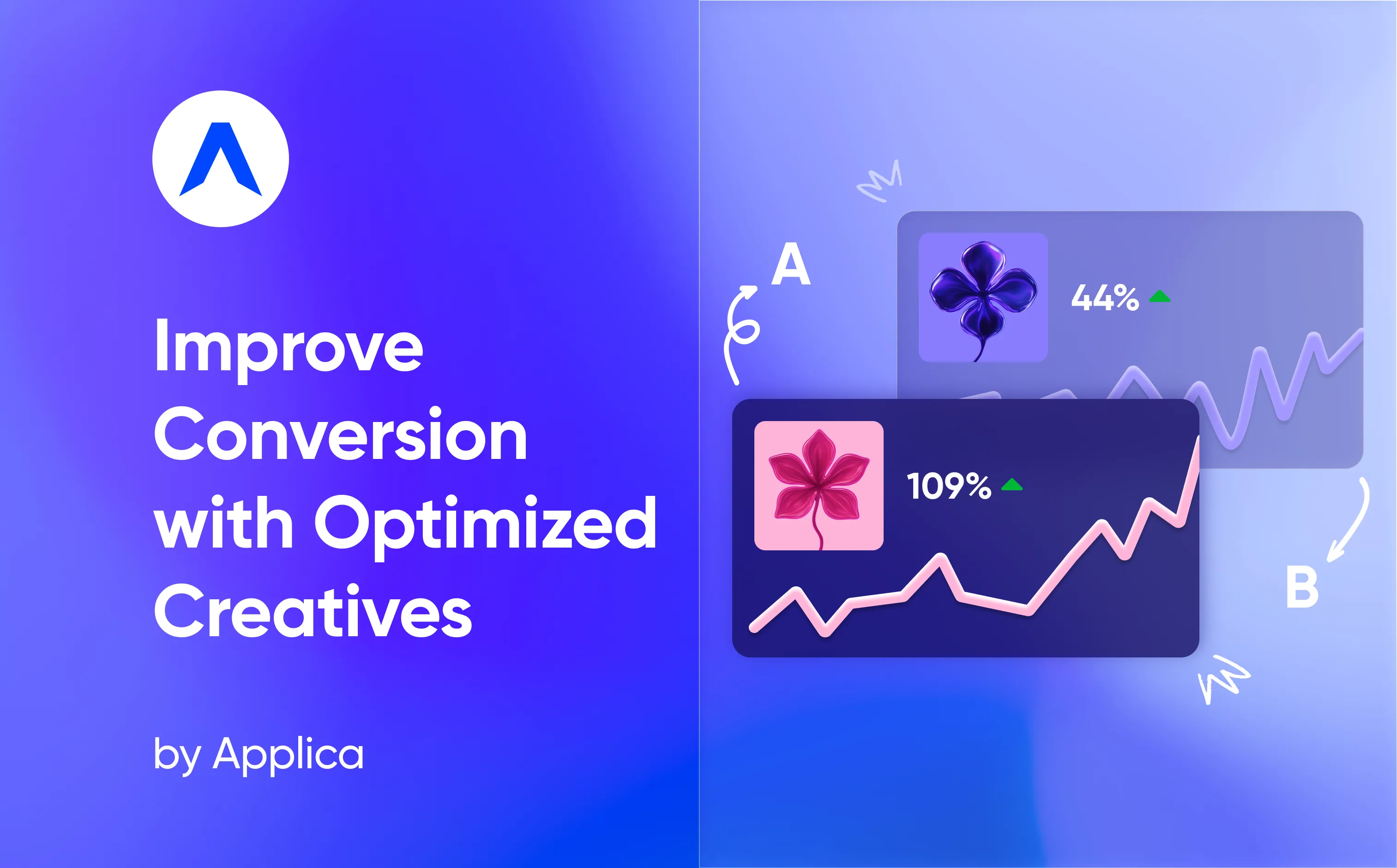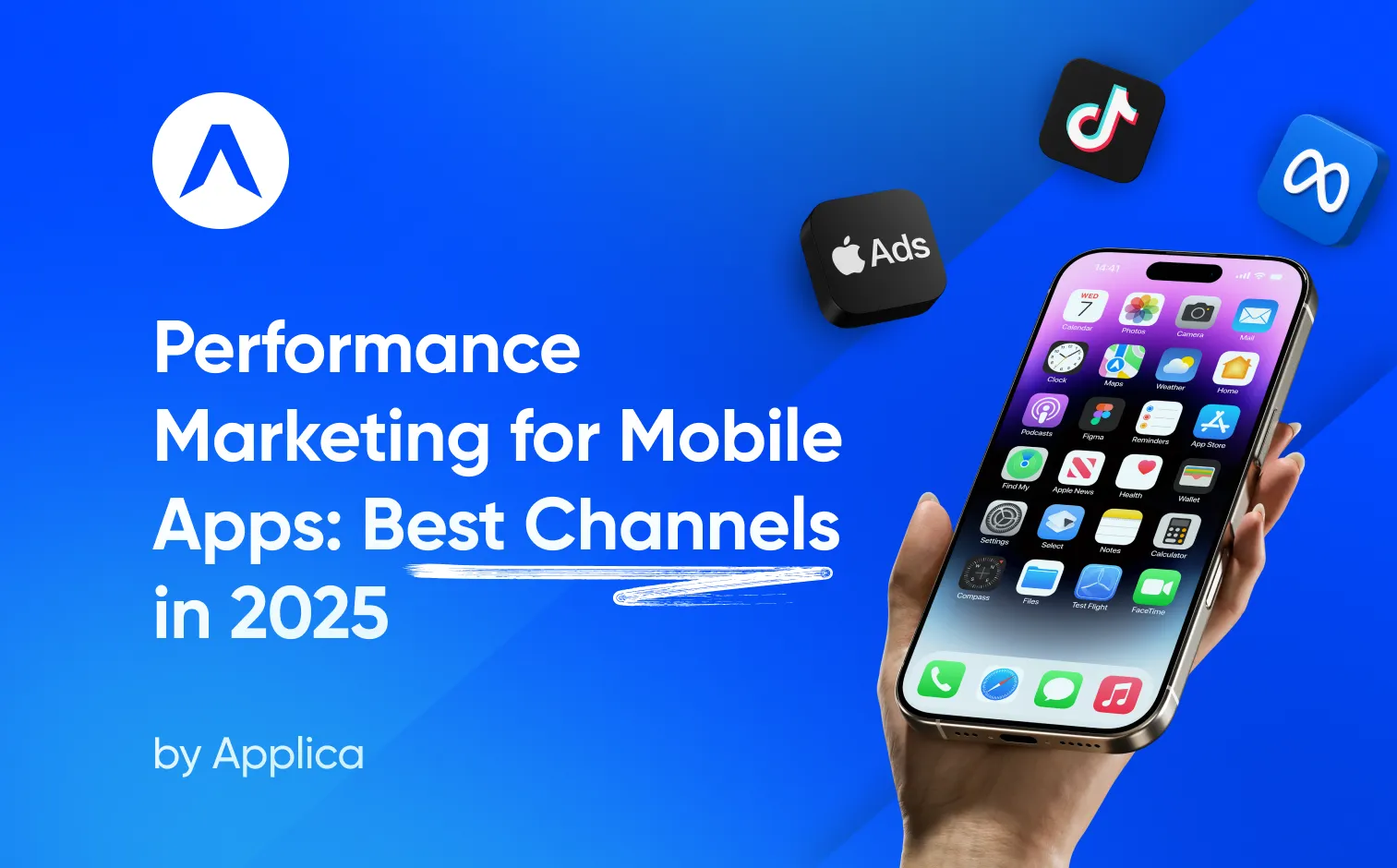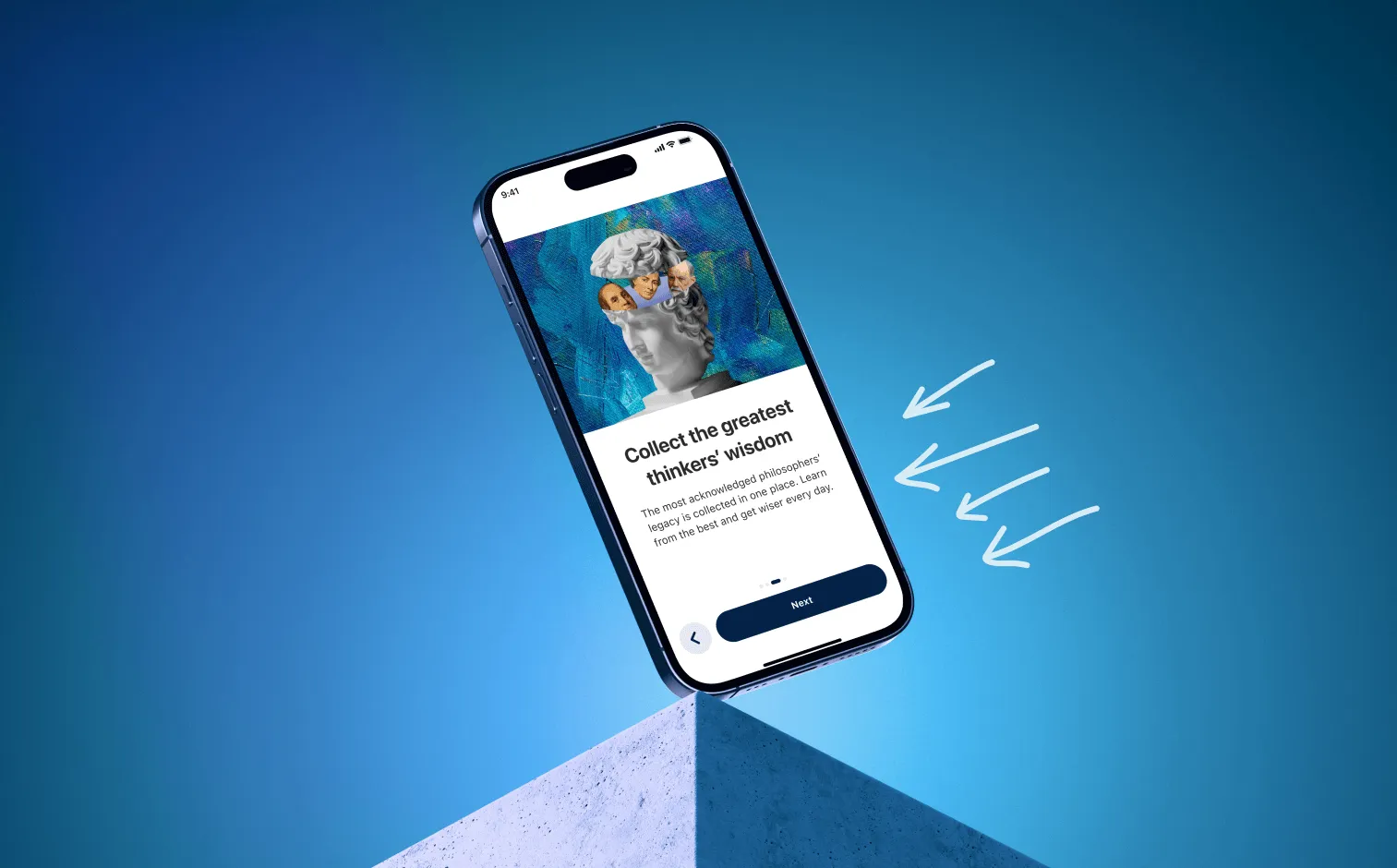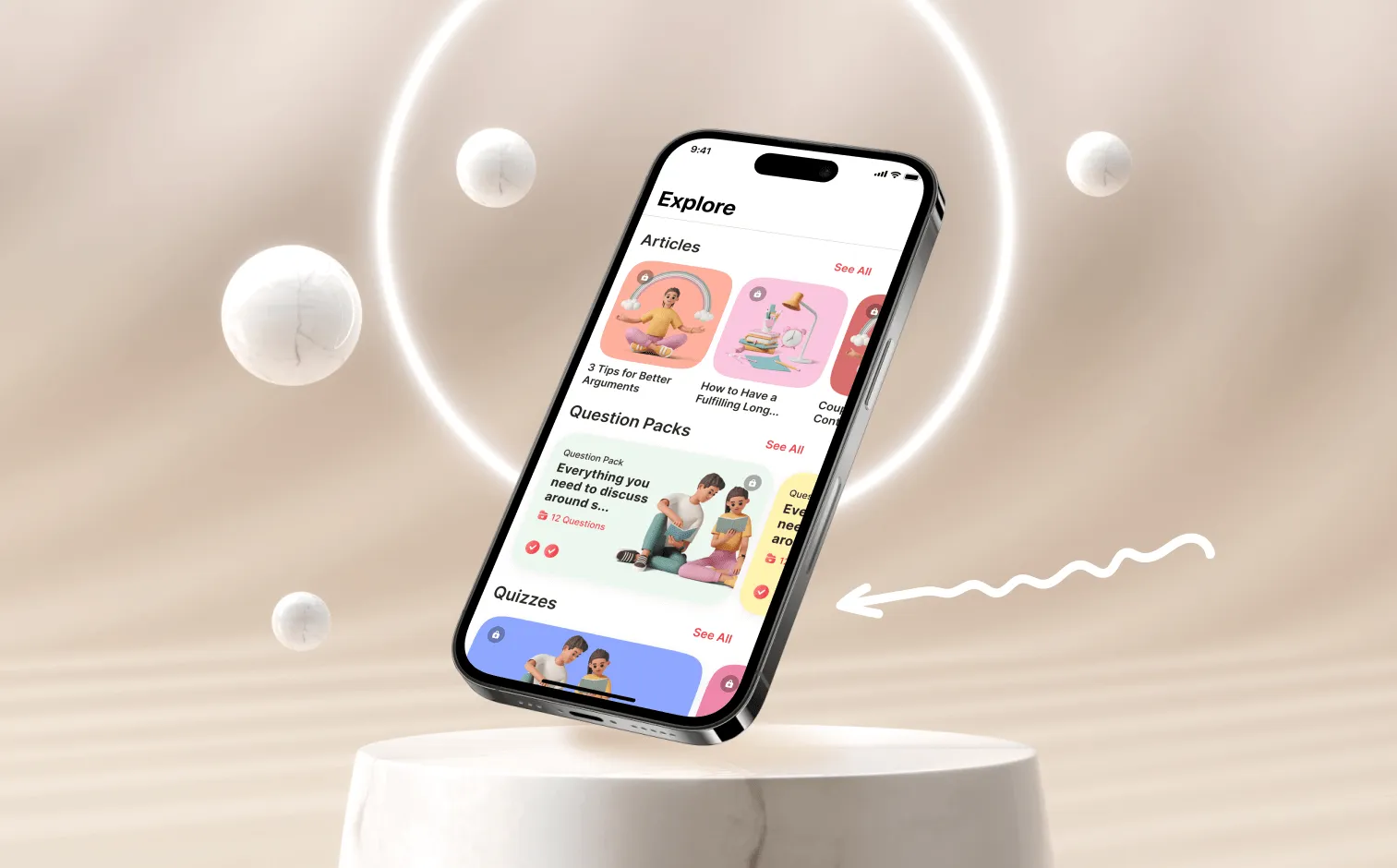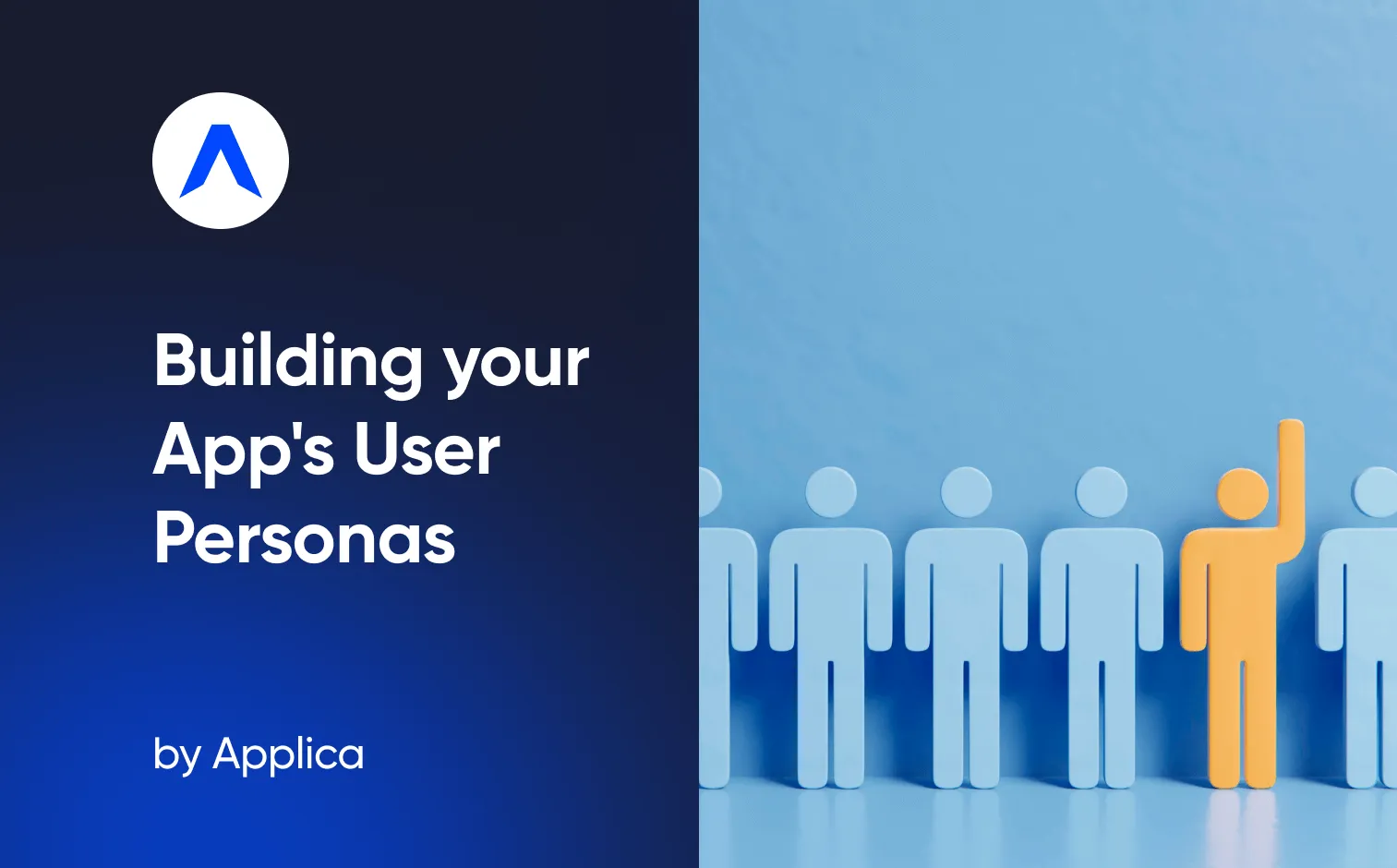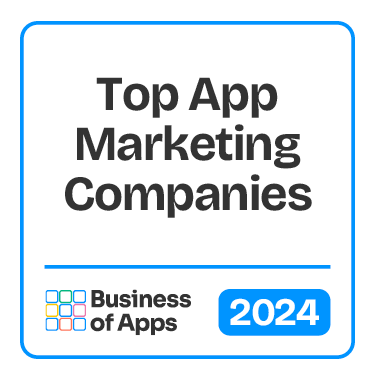In 2025, app store optimization (ASO) is no longer just about ranking for the right keywords, it’s about turning visibility into installs. With increasing competition and CPIs, stricter privacy limitations, and AI-driven app store recommendations, app store conversion rate optimization has become one of the most reliable growth levers for mobile marketers.
That’s where A/B testing of app store creatives comes in. By running structured experiments on icons, screenshots, and app previews, you can discover what actually drives users to install, and apply those insights not only in your app store listing, but also across channels of paid user acquisition.
On average, only around 30% of users who land on an app store product page end up installing the app. That means even small creative wins: a sharper icon, a stronger first screenshot, or a localized video preview – can lift CTR, improve conversion rate, and significantly reduce CPI across user acquisition campaigns.
Creative testing is the most data-driven and reliable lever for driving ASO and app growth in 2025. In this article, we’ll break down how to improve app CTR through A/B testing of app store creatives and share actionable tips for conversion optimization for apps.
What is ASO in 2025?
App store optimization in 2025 goes beyond simple keyword ranking. At its core, ASO is the process of improving an app’s visibility and conversion rate in the app stores to maximize installs at the lowest possible cost.
In general, ASO relies on two main pillars:
- Visibility: making the app discoverable in app store search results and beyond through keyword and metadata optimization, and category placement.
- Conversion: convincing users on app stores to download your app through high relevance, compelling creatives, and messaging.
This article focuses on conversion optimization for apps, an often under-optimized but highly impactful lever for growth.
Why Conversion Rate Optimization Matters More Than Ever
In 2025, app store conversion rate optimization (CRO) is one of the most crucial ASO fundamentals. Here are some reasons for it:
- Rising acquisition costs: CPIs are climbing across all verticals, making each install more expensive.
- Algorithmic impact: App store algorithms increasingly reward a higher conversion rate with stronger visibility and organic ranking.
- Paid UA efficiency: Better product page conversion improves the performance of Apple Ads, Google App Campaigns, and TikTok Ads by lowering CPI.
- High-stakes domains like fintech: In verticals with expensive acquisition funnels, app store conversion rate optimization directly drives ROI and can make or break growth strategies.
Just as importantly, app store conversion rate optimization should be tackled before launching any paid user acquisition campaigns. Without a high-performing app store page, ad spend is wasted on traffic that doesn’t convert. By optimizing conversion first, you ensure the app is truly ready for performance marketing, turning campaigns into efficient growth engines rather than costly experiments.
A/B Testing of App Store Creatives: The Engine of ASO
When it comes to improving click-through rate (CTR) and overall app store conversion rate optimization, there’s no substitute for data-driven experimentation. A/B testing allows you to compare different versions of your app listing: icons, screenshots, videos, or copy, to see what resonates best with your target audience.
Why App Store A/B Testing Matters:
- Removes guesswork: Instead of relying on intuition, you see which creative elements truly drive downloads.
- Optimizes each touchpoint: Small changes, like a screenshot caption tweak or icon swap, can significantly increase CTR.
- Supports continuous improvement: The app store landscape evolves quickly, and A/B testing ensures your listing keeps pace with user expectations and competition.
Below, we’ll introduce the creative testing framework used by Applica, a top-tier app marketing agency. But first, here are some best practices for app store A/B testing:
- Use statistically significant results: Make decisions based on reliable data, not short-term fluctuations.
- Focus on high-leverage elements first: Icons, screenshots, and preview videos often yield the biggest lift in CTR.
- Iterate continuously: Even small incremental improvements compound over time.
In short, A/B testing transforms ASO and app store conversion rate optimization from a “set it and forget it” approach into a systematic, measurable growth engine.
The Core Levers of App Store Conversion Rate Optimization
To turn app store visitors into downloads, you need to optimize the elements users see first: icons, screenshots, videos, and copy, each of which plays a distinct role in shaping user trust, clarity, and motivation.
Icons & First Impressions
Your app icon is the very first impression, and often the deciding factor for whether a user taps into your listing. In categories like fintech, where trust and credibility are paramount, the icon must signal security and reliability.
![]()
Finance app icons on the App Store typically serve one of two purposes: they either visually communicate the app’s main function and capabilities, or they reflect the app’s brand identity.
Here are app store icon testing angles to consider for app store conversion rate optimization:
- Color contrast: Does your icon stand out against both light and dark backgrounds?
- Badge inclusion: Should you highlight a key feature (“$”, a wallet or a shield) to reinforce the app’s purpose?
- Clarity vs. abstraction: A simple, recognizable design often outperforms abstract logos that require explanation.
Tip: In the Finance category, branded icons tend to perform well only for established names, like Revolut. For most other apps, it’s more effective to highlight the app’s core functionality in the icon.
Screenshots & Visual Storytelling
Screenshots aren’t just product previews: they’re your visual sales pitch, either inducing users to install your app or urging them to leave your store listing. The most effective screenshots clearly communicate the app’s value proposition, social proof, and onboarding experience.
Best practices:
- Highlight real benefits, not just UI: Show the outcome users care about.
Note: in some categories, like gaming, showcasing the actual UI or gameplay can be effective, but always A/B test.
- Use captions to frame value, not features.
- Include testimonials or credibility markers (ratings, press logos).
- Add a strong CTA to each screenshot.
Category nuances:
- Fintech: Emphasize security and trust (encryption, fraud protection) and highlight key capabilities that deliver value, like transparent control over finances.
- Edtech: Showcase progress and outcomes (progress bars, certificates).
- Wellness: Lean into emotional connection (calm visuals, lifestyle imagery).
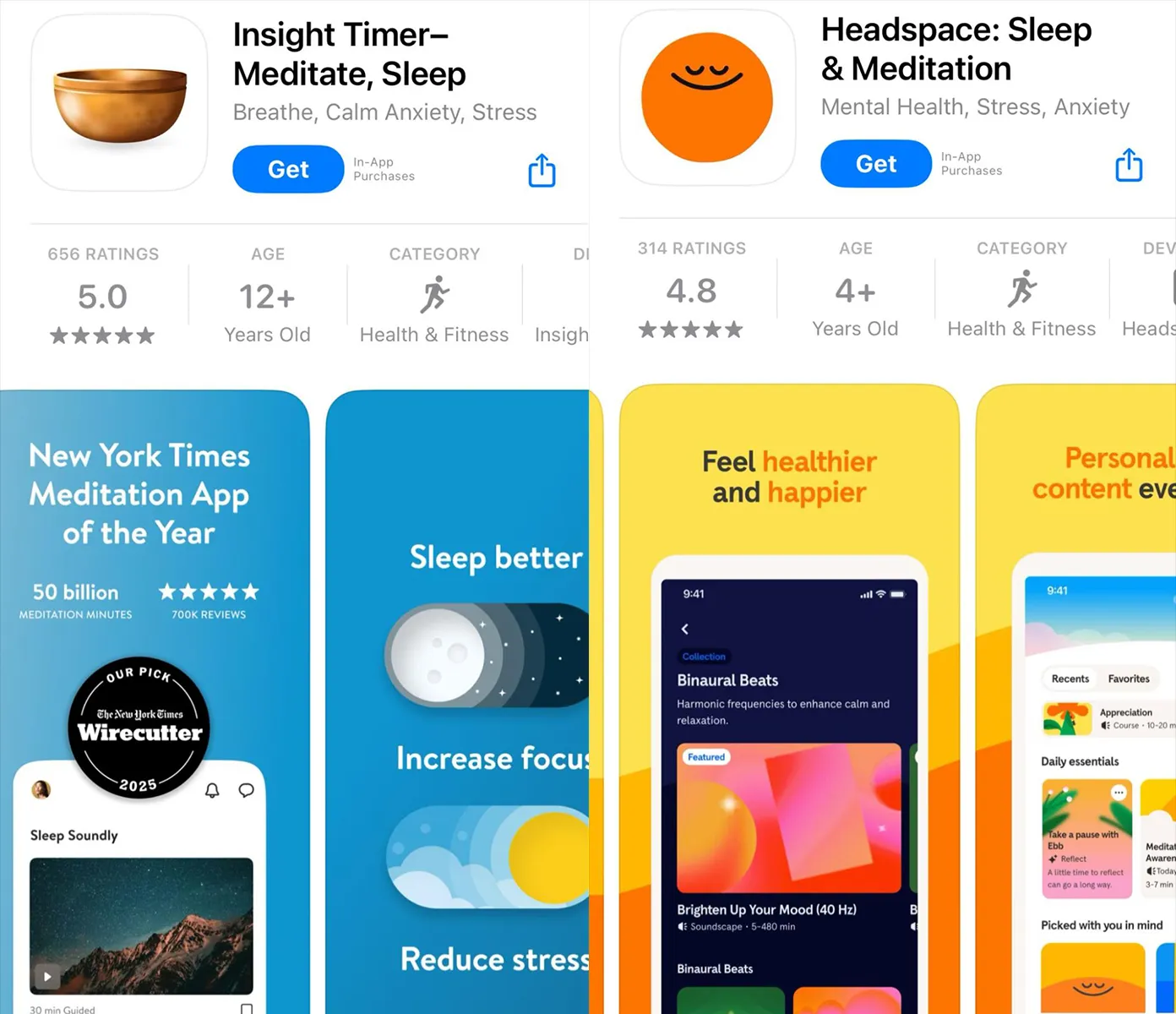
Apps in the Health & Fitness category on the App Store often rely on social proof and emotional appeal to connect with their target audience.
App Preview Videos
Videos can significantly improve app CTR but only when they’re aligned with your app’s core value messaging.
What works:
- Clear, engaging narrative in the first 5 seconds.
- Demonstrating real usage and benefits.
What to avoid:
- Overly long, cinematic videos.
- Abstract concepts that don’t connect to the actual app experience.
However, there have been cases where adding a video preview actually reduced app store conversion rates. The impact is highly app-specific, so if you’re considering adding a video, don’t take unnecessary risks and run A/B tests first.
Copy & Messaging
(Key)Words matter. Every word in your listing: titles, subtitles, descriptions, and even screenshot captions – shapes how users perceive your app and whether they decide to download it.
App store conversion rate optimization levers for text and messaging:
- App title & subtitle: Blend high-value keywords with clarity and relevance. Your title should rank well and immediately communicate purpose.
- Captions on the screenshots: Don’t just list features, frame them as outcomes that solve user pain points.
CTA framing: Test functional vs. aspirational messaging:
- Functional: “Track every expense.”
- Aspirational: “Take control of your money.
Tip: Need help with A/B testing? If you’re looking for a partner to support you, from strategy and hypothesis building to experiment execution and data analysis, Applica is here as your full-cycle growth partner. Get in touch with us!
Creative Testing Framework: How to Improve App CTR via A/B Testing
At Applica, a full-cycle app growth agency, we approach ASO and app store conversion rate optimization as a systematic, iterative process. Creative testing isn’t about throwing ideas at the wall: it’s about applying structure to discover what truly drives CTR and conversions.
Step 1: Prioritize: Choose Creative Elements to Test
Choose key creative elements to test, such as the app icon, first 2-3 screenshots, and the subtitle. These typically have the biggest impact on conversion, since they form the user’s first impression. While focusing on a single element can sometimes make sense (for example, isolating the icon to measure its impact precisely), in practice, testing several elements together often helps uncover user behavior trends and speeds up learning.
Step 2: Formulate a Hypothesis
Before running the test, define why you expect the change to impact CTR. For example: “A more vibrant color palette will make the app icon stand out in search results, drawing attention away from competitors and increasing tap-through rate.”
Step 3: Test Setup
Use reliable platforms or native store experiments to run controlled A/B tests. These platforms simulate real user behavior and deliver actionable insights.
Step 4: Analyze Results
Don’t stop at surface-level numbers. Ensure your findings are backed by statistical significance and be wary of stopping tests too early: short-term spikes may not reflect long-term performance.
Step 5: Implement
Roll out the winning creative to your live app store listing so it starts delivering real conversion gains.
Step 6: Iterate
Treat each winning variation as your new baseline and continue testing to compound improvements over time.
Tip: A/B testing, like ASO, is a continuous process if you’re aiming for app store conversion rate optimization.
Triggers for Fresh A/B Testing
There are key moments when it’s worth re-testing creatives to protect and grow your conversion rate. Running fresh mobile A/B experiments ensures your changes actually deliver a positive impact.
Common triggers for re-optimization:
- App Store or Google Play redesign: Platform UI changes may require you to adjust your visuals to fit the new rules and user experience.
- Holidays or seasonal events: Tailoring creatives to seasonality can boost downloads. But always validate the idea with A/B testing first.
- Competitor updates: If competitors refresh their visuals, consider testing new concepts that borrow inspiration while differentiating through visual salience.
- Emerging design trends: Stay current by testing fresh styles or elements that may resonate with today’s users. For example, you could experiment with the Pantone Color of the Year while it’s trending and hig
- New creative insights: If ads or other channels reveal high-performing visuals, test whether they can also contribute to app store conversion rate optimization before making the switch.
Advanced Trends in Creative Optimization (2025)
As app stores mature and competition intensifies, creative optimization is evolving beyond basic A/B testing. Here are some of the key trends shaping 2025:
AI-assisted creative ideation
Tools like ChatGPT and DALLE make it faster and cheaper to brainstorm and prototype creative variations before testing them at scale.
Personalization by geo / cohort
Localized screenshots, language variants, and cultural nuances help apps connect with specific markets and user segments more effectively.
Regulatory considerations (especially in fintech)
Increasing compliance requirements mean visuals and messaging must balance conversion goals with transparency, disclaimers, and legal guardrails.
Shorter creative fatigue cycles
User attention spans are shrinking, and high-performing creatives burn out faster than before, making constant iteration essential for sustaining growth.
Case Study: How Applica Optimized Peech's Welcome Screen and Boost LTV by 30%
Peech, a text-to-speech app, partnered with Applica to enhance its onboarding experience. The original welcome screen focused on listing app features, which didn't effectively communicate the app's value to new users.
By shifting to benefit-driven messaging, emphasizing how Peech helps users multitask and stay informed without interrupting their day, and conducting A/B tests, they achieved a 30% increase in lifetime value (LTV).
To help Peech immediately convey value to new users, Applica crafted the copy informed by user research and validated it with rigorous A/B testing.
Here is the approach Applica had taken:
User Interviews
Using the Jobs-to-Be-Done (JTBD) framework, Applica conducted structured interviews to understand users’ needs and the “jobs” they wanted the app to accomplish. These insights guided the messaging strategy.
Revised Copywriting
Applica replaced the original features-first copy with benefit-driven messaging, highlighting how Peech helps users multitask, stay informed, or consume content without interrupting their day.
A/B Testing for Validation
The new version provided a more user-focused explanation, roughly double the length of the original text. While longer text can sometimes reduce engagement, Applica’s hypothesis was that a user-led, benefit-driven approach would resonate better.
Results
- By emphasizing user benefits over features and optimizing the flow based on test results, Peech saw a 30% increase in LTV.
- Engagement and conversion improved thanks to better-aligned messaging and visuals.
- The case highlights the power of systematic A/B testing and creative optimization in driving measurable growth.
Tip: Data-driven testing and iterative optimization, guided by expert insights, can dramatically enhance app performance, turning small creative changes into significant growth.
Ultimate Checklist: How to Improve Your App Store CTR
- Audit icon & first three screenshots: Ensure clarity, relevance, and visual salience in search results.
- Localize creatives for top markets: Tailor visuals, messaging, and screenshots to language, culture, and regional preferences of your target audience.
- Test trust signals: Include badges, testimonials, ratings, or press logos to boost credibility.
- Run one new creative test per month: Keep iterating to discover high-performing assets.
- Optimize app title & subtitle: Blend relevant keywords with clear messaging of value and purpose.
- Frame description and screenshot captions as outcomes: Focus on user benefits rather than just UI and features.
- Experiment with app preview videos: Test length, pacing, and messaging alignment to see what increases CTR. If a video doesn’t work for your store listing, that’s alright – just focus on screenshots for app store conversion rate optimization.
- Highlight seasonal or event-driven content: Update creatives for holidays, promotions, or trending events, but first validate with A/B testing.
- Use custom product pages (CPPs) on the App Store and custom store listings on Google Play: Showcase different features and value propositions with tailored creatives for different audience segments.
- Monitor competitor updates: Refresh your listing if competitors change visuals or messaging, and differentiate using visual salience principles.
- Stay on top of trends & AI tools: Use AI-assisted ideation, emerging design trends, and cohort personalization to keep your listing modern and relevant.
- If you want to learn from a team that has been running mobile A/B tests for nearly a decade, get in touch with Applica, your full-cycle growth partner.
FAQ
What is a good app store conversion rate in 2025?
A good install conversion rate (CVR) on the App Store or Google Play in 2025 is typically 20–30%, depending on category and market.
How can I increase my app store CTR quickly?
- Refresh the app icon to improve first impressions.
- Update the first three screenshots with clear value props. Or with limited resources, focus on the screenshot #1.
- Add social proof (ratings, testimonials, awards).
- Localize creatives for top target markets.
- Test one element change at a time with App Store/Google experiments or A/B tools.
Does creative testing really reduce CPI?
Yes. Improving CTR and CVR in the app store increases organic installs and reduces the effective CPI of paid campaigns. Even a 10% lift in CVR can translate into 15-25% lower CPI across Apple Ads or other paid user acquisition campaigns.
What’s the difference between ASO and app store conversion rate optimization?
ASO (App Store Optimization) covers both visibility (keywords, rankings) and conversion (creatives, messaging).
App store conversion rate optimization (CRO) is the sub-part of ASO focused only on turning store page visitors into installs by improving creatives, copy, and trust signals.
How often should I update my app store creatives?
Most apps refresh their icon/screenshots every 6-12 weeks. High-spend categories (like gaming or wellness) often run weekly creative tests to prevent fatigue.
Which creatives impact conversion rate the most?
The creatives that have the biggest impact on app store conversion rate are the first three screenshots, the app icon (which forms the first impression), and the app preview video.
Should I optimize first for keywords or conversion rate?
In 2025, both matter, and what’s more, relevant keywords impact your conversion rate. But if you already get good traffic, improving the conversion rate first has the fastest ROI.
Does localization affect conversion rate?
Yes, localized screenshots and descriptions can lift installs by 20-40% in non-English markets.
How do reviews and ratings impact CVR?
Ratings under 4.0 stars can cut conversion rates by 20-30%. Proactively requesting reviews after positive user actions helps stabilize CVR. Always reply to both positive and negative reviews.
What tools help track conversion rate in 2025?
Native tools: App Store Connect, Google Play Console.
Third-party: AppTweak, SplitMetrics, Storemaven, MobileAction.
Or you may just entrust Applica with app store conversion rate optimization, and see results in the first months.
Conclusion
App Store conversion rate optimization is an essential part of ASO. With algorithm changes, rising user acquisition costs, and growing competition, you need to convince users who see your app in search results, or even better – visit your listing – to download it. A higher conversion rate not only boosts downloads but also signals the app store algorithms, improving your ranking.
Moreover, a well-optimized product page forms a critical foundation for paid UA campaigns, ensuring your ad spend delivers maximum return. One of the most effective ways to optimize your listing is data-driven A/B testing: relying on insights from real user behavior, not just intuition.
App store creatives – icons, first screenshots, video previews, – and messaging are the highest-ROI levers for improving CTR and overall conversion. Systematic testing and iteration of these elements can drive significant growth, giving your app a competitive edge.
Ready to unlock your app’s potential? Request a call with the Applica experts and start optimizing today.



